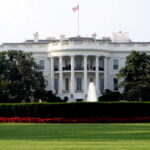The FIFA Club World Cup 2025 is not just another edition of a tournament—it’s a historic transformation. Set to be held in the United States from June 15 to July 13, 2025, this is the first expanded 32-team format, turning what was once a small invitational into a true global club championship.
Previously a 7-team event with limited fanfare, the new format aims to create a summer football spectacle similar to the FIFA World Cup, offering clubs from every continent the chance to prove themselves on the world’s biggest club stage.
In this article, we’ll explore the new format, qualified teams, key players, host cities, commercial implications, and why this tournament could change club football forever.
1. What’s New in 2025?
The revamped format brings significant changes:
- 32 teams across 6 confederations
- Four groups of eight, top two from each group move to the quarterfinals
- A total of 64 matches over 29 days
- Tournament played every four years, replacing the previous annual format
It’s essentially a club-level World Cup, where giants from Europe, South America, and beyond finally face off on even footing.
2. Qualified Teams (So Far)
FIFA used the results of previous continental tournaments (2019–2024) to determine entrants.
UEFA (Europe – 12 clubs)
- Manchester City
- Real Madrid
- Chelsea
- Bayern Munich
- PSG
- Inter Milan
- Atlético Madrid
- Barcelona
- Borussia Dortmund
- Juventus
- Benfica
- Napoli
CONMEBOL (South America – 6 clubs)
- Flamengo
- Palmeiras
- River Plate
- Fluminense
- Boca Juniors
- Independiente del Valle
CAF (Africa – 4 clubs)
- Al Ahly
- Wydad Casablanca
- Mamelodi Sundowns
- Espérance de Tunis
AFC (Asia – 4 clubs)
- Al Hilal
- Urawa Red Diamonds
- Jeonbuk Hyundai Motors
- Al Ain FC
CONCACAF (North America – 4 clubs)
- León
- Monterrey
- Seattle Sounders
- Club América
OFC (Oceania – 1 club)
- Auckland City
Host Nation (USA – 1 club)
- Likely to be LAFC or Inter Miami, depending on MLS 2023–24 results
This mix ensures representation from every continent, while maintaining competitive integrity by favoring champions from past years.
3. Host Cities and Venues
Following the model of the 2026 FIFA World Cup, matches will be spread across 10 U.S. cities, including:
- Los Angeles (SoFi Stadium)
- New York/New Jersey (MetLife Stadium)
- Dallas (AT&T Stadium)
- Miami (Hard Rock Stadium)
- Seattle (Lumen Field)
- Atlanta (Mercedes-Benz Stadium)
- Philadelphia (Lincoln Financial Field)
- Houston (NRG Sta
Conclusion
The FIFA Club World Cup 2025 is not just an evolution—it’s a revolution. It’s FIFA’s boldest move yet to globalize elite club football and offer meaningful competition beyond Europe.
While there are challenges—scheduling, player overload, competitive balance—the opportunity to see top clubs from every continent clash in a World Cup-like setting is thrilling. For players, it’s a global showcase. For fans, it’s a dream tournament. And for world football, it could be the beginning of a new era.










